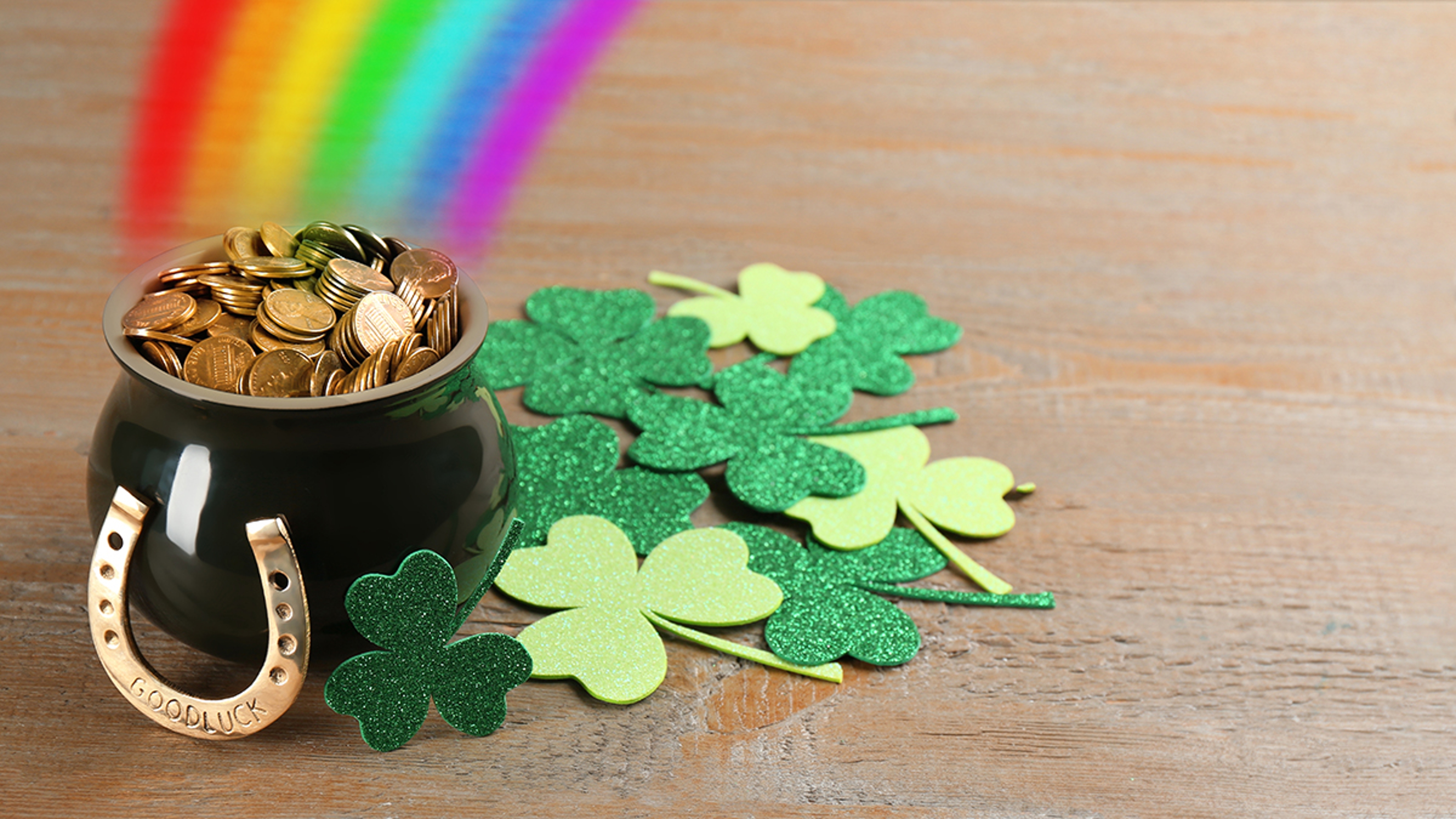Feeling Lucky? Here’s the Scoop on Four-leaf Clovers
Not everyone knows the difference between a shamrock and a four-leaf clover.
Mar 06, 2021
There’s a saying that everyone is Irish on St. Patrick’s Day. But not everyone knows the difference between a shamrock and a four-leaf clover.
In honor of March as Irish-American Heritage Month, we’re sharing interesting facts about these bright green plants that are part of Irish lore.
The word “shamrock” comes from the Gaelic “seamróg,” which means “little clover.” Known as the national flower of Ireland, the shamrock grows freely throughout the Irish countryside. Botanically, the plant is the white clover (Trifolium repens), a stem-rooting perennial with three leaves. (Other three-leaved plants, including the Trifolium dubium and Trifolium pratense, are also called shamrocks.)

Legend has it that in the fourth century, St. Patrick used the shamrock as a way to teach the Irish people about the Holy Trinity of the Father, Son, and Holy Spirit. Today, the shamrock’s three leaves are said to represent faith, hope, and love.
Occasionally, a fourth or “lucky” leaf appears on a single shamrock stem. There are many theories about how this extra leaf forms, but most of them boil down to that it’s caused by a genetic mutation.
You might even find a five-leaf or a six-leaf clover. In fact, the Guinness Book of World Records lists 56 as the most leaves ever seen on one clover stem. That record-breaking shamrock grew in Hanamaki City, Iwate, Japan, in 2009.
Why four-leaf clovers symbolize luck
The history of both the shamrock and the four-leaf clover as good luck symbols goes back to the ancient history of Ireland. The Celtic priests believed that carrying a shamrock helped them see approaching evil spirits, and they also wore four-leaf clovers as charms to ward off bad luck.

The legends passed down to the Middle Ages when Irish children carried four-leaf clovers with them in the hope that their magic would bring them good luck and help them see fairies.
Today, discovering a four-leaf clover still has wide appeal as a lucky charm. “No matter where you are in the world, if you see a field of shamrock, you could be lucky enough to find a four-leaf clover,” says Stephen Palmer, creator of irisharoundtheworld.com, a website for all things Irish. “This association coupled with St. Patrick's Day and the millions of people who claim Irish heritage around the world is the biggest reason for the appeal of the shamrock.”
Tips for finding a four-leaf clover
Gardening experts estimate that about one out of every 10,000 shamrocks have four leaves and that about 200 shamrocks grow in one 24-inch square plot. That math means that you should be able to find at least one four-leaf clover in a 13-square-foot area.
You may have met some people who seem to have a knack for finding four-leaf clovers. How do they do it? Scientific American recommends a – you guessed it -- scientific approach. Instead of attempting to inspect each clover’s leaves, try looking at a clover patch without focusing on the details. Scientists believe that this process will increase the chances that one that deviates from the three-leaf pattern will stand out from the rest.
How to preserve your lucky charm
If you’re fortunate enough to find a four-leaf clover, you may wonder how to preserve your charm. Some people like to display them in frames or jewelry. Here’s how to prepare your lucky charm for posterity.

First, gently press the leaves to flatten them and remove any moisture. You can do this in a flower press or in between the pages of an old book. If you don’t want to damage the book, place the clover between two sheets of clean paper within the book. Place the leaves face down on the page and fold the stem towards the book’s opening edge.
Next, close the book and encircle the cover with several tight rubber bands to hold it closed. Another option is to stack several heavy books over the one holding the clover. Leave the book undisturbed for about a week.
The next step is to make sure the clover is dry and flat. If not, repeat the process for another day or so.
Now, your lucky charm is ready to laminate and place in a frame or necklace.
Another way to keep the “luck of the Irish going” is to use your four-leaf-clover to start a lucky garden. All you need to do is place the clover stem in a glass of water until it grows roots. Then you can transfer it to a pot of soil or the ground to start your own lucky patch.
Freda Hayes of Blarney Woolen Mills in Blarney, Ireland, suggests that St. Patrick’s Day is an excellent time to pass on the luck of the Irish with the gift of shamrocks. “There is probably a garden center near you that sells shamrock plants,” she says.
Shamrocks also are easy to grow from seed, and their bright green color and delicate white blooms make them attractive houseplants. And who knows, maybe you’ll find a lucky four-leaf clover right in your own home.








